The Definitive List Of Squat Mistakes
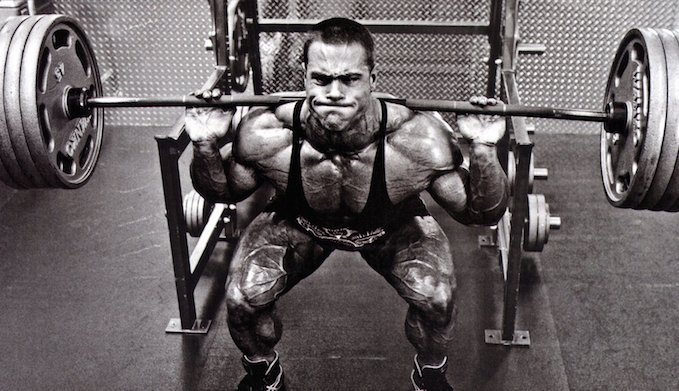
Do you find yourself skipping leg day?
Don’t worry, I won’t get on your case (too much).
For many people, leg day is the gym day they look forward to the least – and, as a result, the one they are most likely to skip!
But you know what happens if you frequently neglect to train your legs?
Well, you will have tiny, underdeveloped stick legs that are forced to hold up a disproportionately large upper body.
Not a good look, if you ask me…
Ok, now that we’ve established that you don’t want to have weak looking chicken legs, let’s get to the primary subject of this article: the barbell squat.
Out of all the gym exercises that people do, this one is one of the most important.
Bar none.
However, I’ve found that it is also an exercise that many people have difficulties with – if they even bother to squat at all!
So, to help you correct any squatting issues that you may have, I am going to go through all of the most common squat mistakes that I see people making.
After reading this article, you should be able to tighten up your squat form, fix any of these problems that you’re making, and start allowing your legs to grow big and strong.
Let’s get to it!
1) You’re not squatting low enough.
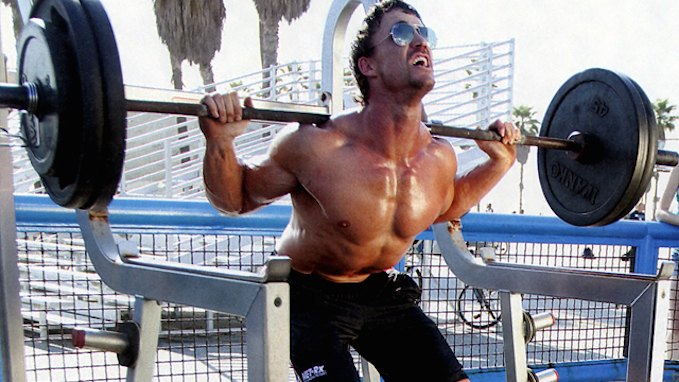
This is probably the single biggest squatting problem I see.
I come across it pretty much every time I’m at the gym (and I’ve been guilty of it myself in the past).
Not squatting low enough – known as a ‘half squat’, or, in some cases, a ‘quarter squat’ – will seriously impact your leg development, and leave you open to injury.
When you break it down, there are 2 main reasons that this happens:
1) You are trying to squat more weight than you can actually handle.
2) You have other, more nuanced form issues (which we will go over later in this article).
In my experience, it is often a combination of both!
The bottom line is if your thighs aren’t at least parallel with the floor at the bottom of your squat, you aren’t going low enough.
You should pretty much always squat to parallel or below. Yes, there are some variations that will have you squatting with a reduced range of motion, but those should only be explored once you have a solid full squat, not before.
Note: if you’re having this problem, it can also be worth trying out box squats, so that you become more familiar with squatting to proper depth. You can learn how to do these by following this comprehensive guide to box squats here.
2) You’re not letting your knees come in front of your toes (or they come out too much).

Now some people say that you should never, ever have your knees come out even slightly in front of your toes.
I do not subscribe to this school of thought.
This particular belief links back to a study that tested the stress of squatting on the knee joint. The study found that when you limited the knee from coming out in front of the toes, it decreased the amount of stress on the knee joint.
That being said, the study didn’t demonstrate that this amount of stress was at all problematic for the knee joint, or that it was beyond the normal level of stress that the knee is adequately equipped to handle.
In many cases, when you limit the range of motion of the knees too much, it can actually cause you to lean forward during your squats, which isn’t good for a whole bunch of other reasons (which I’ll get to in a second).
However, on the other end of the spectrum, I find that people who are too knee-centric when squatting tend not to bend at the hips, and instead choose to perform a knee-destroying half squat with far too much weight.
So, how far forward should your knees come then?
This depends on 2 factors: how wide your stance is and the length of your legs relative to your torso.
If you have a wider stance squat, your knees won’t need to come as far forward to hit a full range of motion, while still keeping your body relatively upright.
A narrower stance squat, however, will require your knees to come forward more in order to achieve full depth without leaning forward.
Also, if have longer legs relative to your torso, your knees will need to come out more than if you have shorter legs relative to your torso.
The bottom line is that you shouldn’t completely restrict forward knee travel – but at the same time your squat shouldn’t be so knee-centric that you don’t suitably break at the hips.
3) You’re rounding or hyper-extending your lower back.
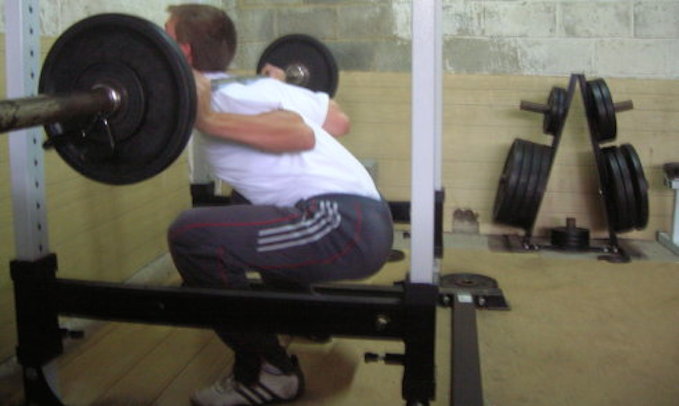
Just as with the deadlift, you should never round your lower back when squatting.
No exceptions to this one.
Rounding your lower back can put tremendous amounts of stress on your lower spin, which becomes increasingly dangerous as you graduate to heavier and heavier weights.
At the same time, you don’t want to hyper-extend your lower back either – since this also puts pressure on your lumber spine, and can cause lower back issues.
Instead of going to either extreme, you should focus on keeping your lower back in a natural, yet strong position – neither rounding or hyper-extending it at any point.
4) You’re leaning too far forward.
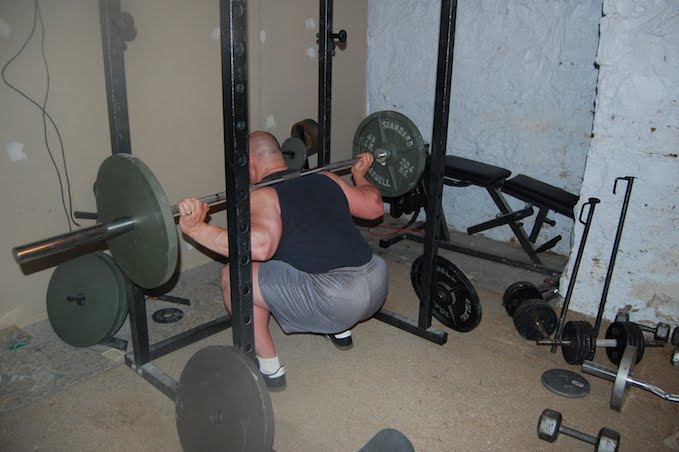
When squatting, many people end up leaning too far forward at the bottom of the movement.
Then, when they push the weight back up, they straighten their legs, leaving their entire torso almost horizontal with the floor.
This puts a lot of strain on the lower back, and also takes your quads out of the latter part of the lift.
Not a good idea!
The amount that you should lean forward depends specifically on your torso to leg ratio and whether you are doing a low-bar or high-bar squat.
If you do a low bar squat (with the bar below your traps) you will necessarily need to lean forward more than if you do a high-bar squat (with the bar resting on your traps).
Still, too much forward lean is never a good idea when squatting.
The easiest way to correct this problem is to keep your upper back tight and your chest out throughout the entire exercise.
5) You’re not keeping your upper back tight.
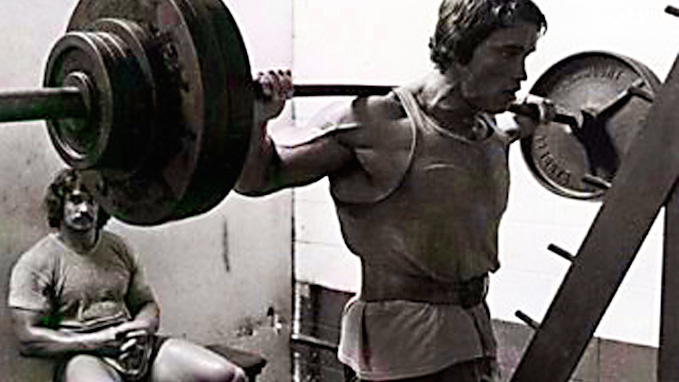
Following on from the previous point, having the proper upper back tightness is integral to maintaining good squat form.
Without a tight upper back, everything else tends to fall apart, form-wise.
And, from my experience, this is an area of squat form that even experienced squatters tend not to get right.
The best way to maintain the correct upper back position is by making sure that everything is in order before you even lift the bar off the rack.
To do this, position yourself under the bar, grab the bar as if you are going to do a shoulder press, and squeeze your shoulder blades tightly behind your back.
You should then maintain this level of tightness throughout the entire movement.
Personally, I find that it’s easier to grab the bar with a closer grip, since this automatically ensures greater upper back tightness than if you use a wider grip.
6) You’re letting your elbows flare out.
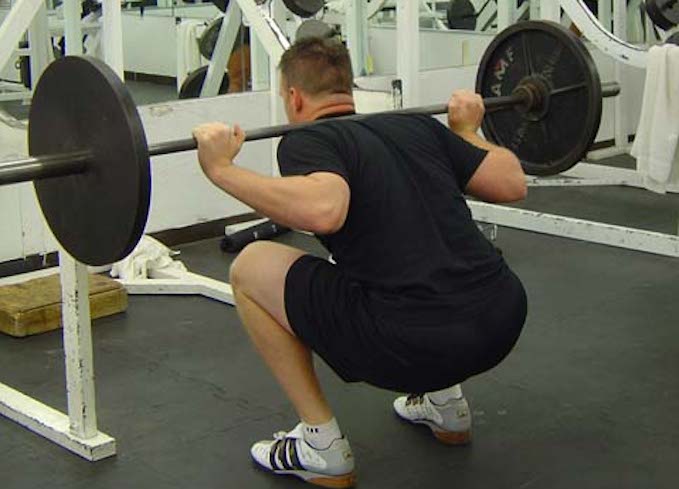
You want to have your elbows pointing down, as much as possible, when you squat.
This is especially true when you perform a high bar squat, with the bar resting on top of your traps.
For most people that have an issue with this, it is easily corrected by making sure that your elbows are pointing towards the floor (or as close as possible) as you tighten your shoulder blades and lift the bar off the rack.
It is all part of the same motion – and once you lock it in at the beginning of your squat, it is far easier to maintain for the entire set.
7) You’re not bending at the hips.
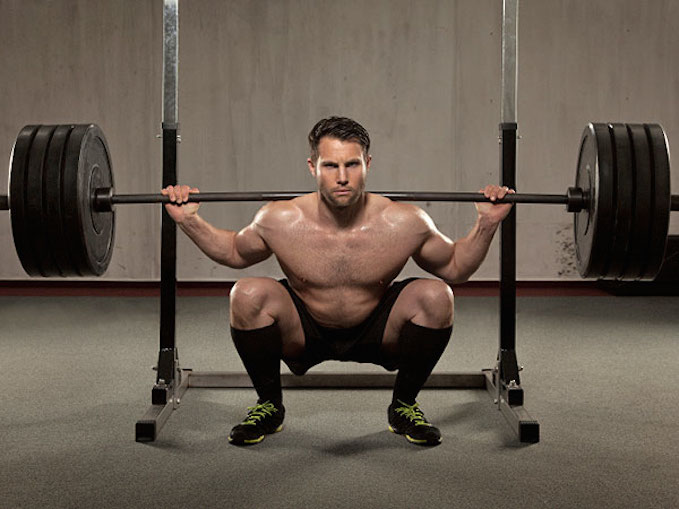
To squat properly, you need to bend at the hips and stick your ass out backwards.
This can feel pretty awkward at first, if you’ve never squatted properly before, but it is essential if you are going to have a full range of motion.
To help with this, you can visualize yourself sitting back onto an invisible stool that’s directly behind you.
In my opinion, inadequate hip movement (often stemming from poor hip flexibility) is one of the single biggest culprits behind the half-squat – so make sure to work on your hip mobility and lower back flexibility if you’re having this problem.
8) You’re not opening up your hips.
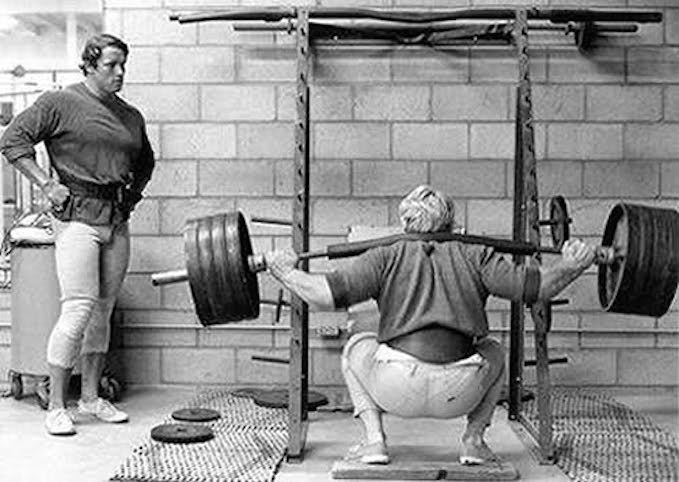
Another problem that is closely related to the above mistake is not opening up the hips properly.
If your hips aren’t open, it is considerably more difficult to achieve proper depth during your squat.
Thankfully, the problem is often easily corrected: the next time you squat, simply point your toes slightly outwards, instead of having them point completely forward.
Then make sure that your knees are tracking outwards over your toes as you go down for each rep, and you should find it much easier to squat deep while maintaining good form.
9) You’re not breaking with your knees.
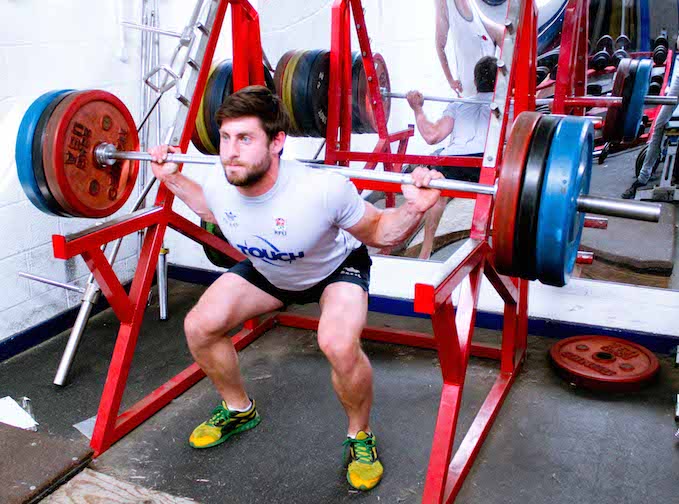
A lot of people start the movement with their hips, instead of their knees.
This is wrong.
When you do this, it will typically cause your torso to tilt forward, thereby creating another problem (see mistake #4).
When you start the movement with your knees, however, it is much easier to maintain a more vertical torso and chest as you squat down.
10) You’re letting your knees collapse inward.
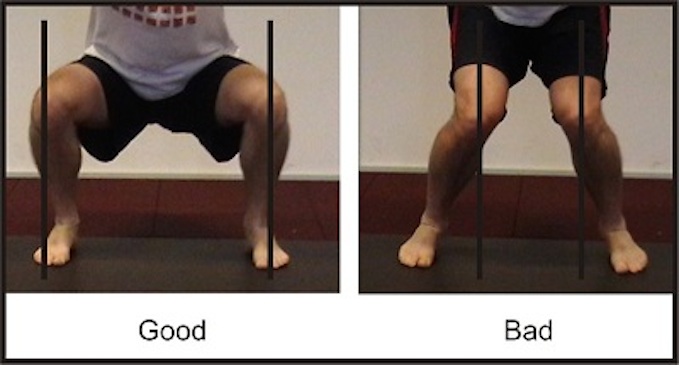
Having your knees buckle inwards is an extremely common squatting mistake that I see all the time.
And when this happens, it makes it considerably more challenging to maintain your balance – let alone lift a lot of weight!
9 times out of 10, this is caused by your toes pointing directly forward, instead of slightly out to the side (at around a 30 degree angle).
When you point your toes out, you should find it much easier to make your knees go outward, over your toes, as you bend down for the squat.
This will greatly increase your stability and range of motion, making the entire movement safer and more effective.
11) You’re not using your glutes enough.
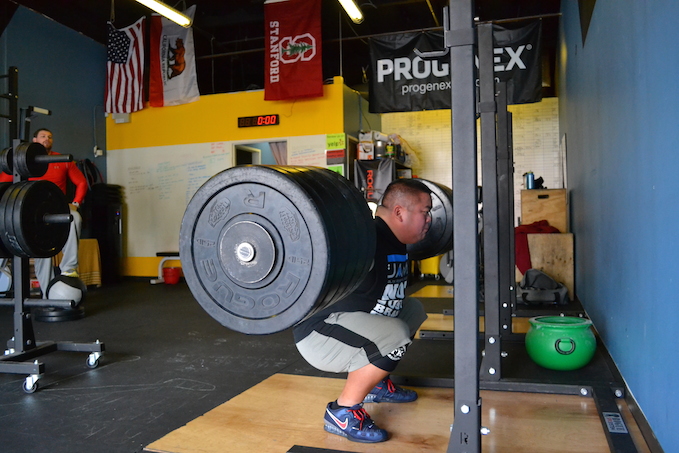
Many people think of the squat primarily as a leg exercise.
And, yes, it is a leg exercise…
But it is also a glute-driven exercise when done correctly.
This is especially true when you’re at the bottom of the squat and need to drive the weight back up.
Much of the power for this should come from your glutes, in addition to your quads.
To do this, make sure to contract your glutes hard at the bottom of each squat to initiate pushing the weight back up.
12) You’re not driving through your heels.
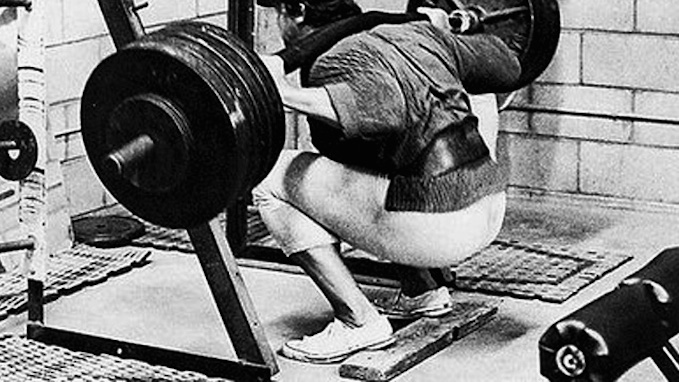
This is a hard one for a lot of people, and it personally took me awhile to get this right too.
Basically, throughout the entire movement, you should be resting your weight on your heels, instead of your toes or the balls of your feet.
Due to poor form in other areas, or limited ankle mobility, people will often find that they seem to come up on their toes as they squat down.
This causes them to press the weight through their toes and the balls of their feet when squatting back up, significantly limiting their potential power.
To fix this, really try to mentally focus on driving the weight through your heels at all times during the movement.
You can also try scrunching up your toes in your shoes as you learn to fix this particular issue. This will have the effect of transferring much of the weight to the back of your foot automatically.
If you have real issues with this, however, I would suggest working on your ankle mobility, since that is probably the limiting factor.
13) You’re wearing the wrong shoes.
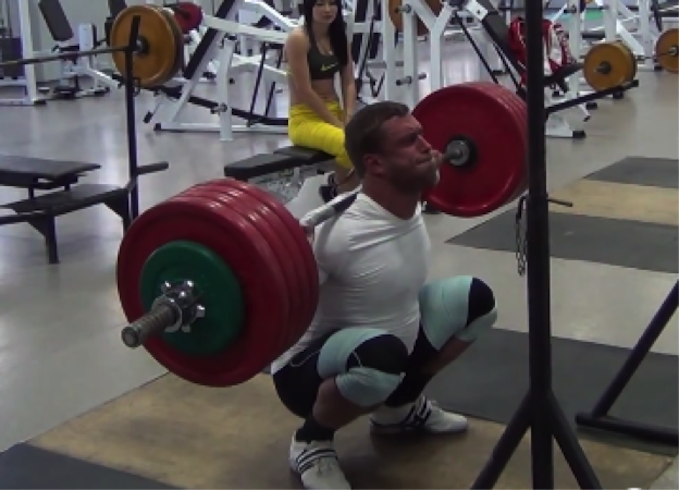
Are you wearing running shoes when you squat?
If so, you’re making the whole thing more difficult than it needs to be.
You see, when you wear running shoes, you are a creating an inherently unstable structure for your squats.
Since they are not flat shoes, it will be very difficult to properly stabilize the weight, let alone drive through your heels.
Instead, you should be wearing either shoes with a hard, flat sole (like Chuck Taylors), shoes with a slightly raised heel (like Adidas Powerlifts) – or even squat barefoot if you like.
For more information on this, I’d suggest checking out my article on weightlifting shoes here.
14) You’re using a squat pad.
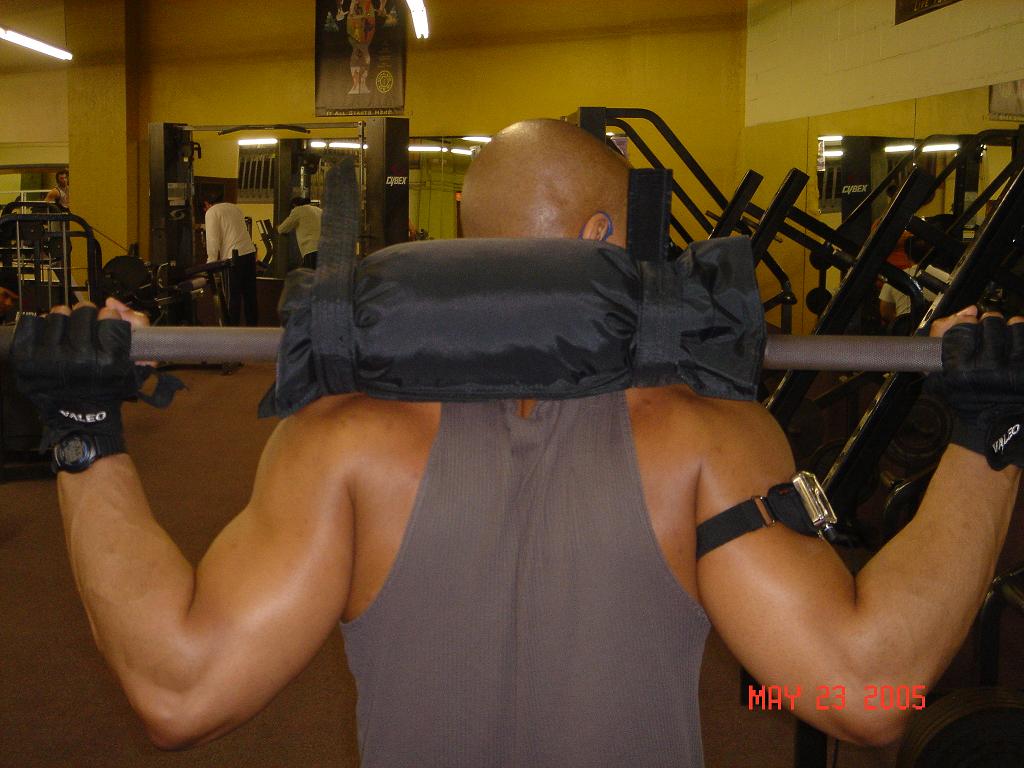
A lot of commercial gyms will have this soft neck pad next to the squat rack.
This is meant to help cushion the weight of the bar across your traps.
However, as well-intentioned as this cushion may be, it will negatively impact your squat form. I guarantee it.
In fact, if you use one of these, it will be incredibly difficult to maintain proper upper back tightness, leading to all sorts of issues.
Also, it just kind of looks stupid – and I can safely say that I have never seen anyone that squats well using one of these things. Ever.
15) You’re squatting on the smith machine.
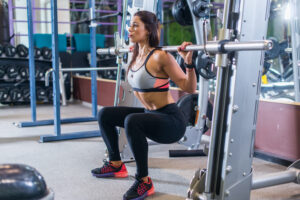
Ahh, the smith machine.
I’ve written about you before, and I’m sure that I will again.
Unfortunately, far too many people choose to squat on this rigid contraption.
I don’t know why this is – but if this is something that you’re currently doing, I implore you to stop right away!
It will lock your entire squat into this awkward, unnatural range of motion, inviting all sorts of form problems and their resultant injuries.
Yes, I would go so far as to say that you’ll never learn how to squat properly if you insist on doing them on the smith…
Ready to begin building an awesome squat?
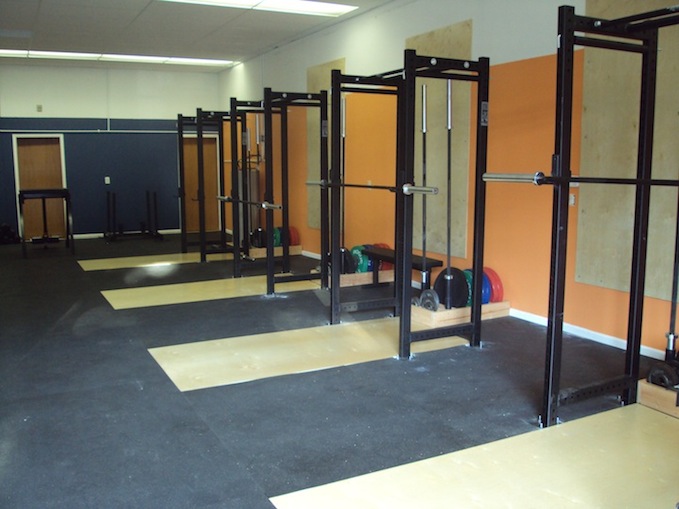
The squat is truly one of the best exercises out there, and should be included in the vast majority of strength training routines.
But, as you can see, it is also one of the more nuanced exercises, as far as form is concerned.
Doing it wrong will lead to frustration and injuries, whereas taking the time to perfect it – and fix any mistakes that you’re making – will pay off massively in the long run.
Indeed, if you take the time to learn how to squat properly, you’ll be able to develop that fantastic leg strength, size, and flexibility that the squat offers its adherents.
And if you’re a half squatter at the moment, I would strongly urge you to stop wasting your time with those useless and damaging knee busters.
Even if it means you have to drop your weight down, it’s a wise idea to just suck it up, take some plates off, and focus on building your squat with good form from the ground up.
I promise that you won’t regret it when you realize that your knees and lower back don’t have to hurt each week after leg day!